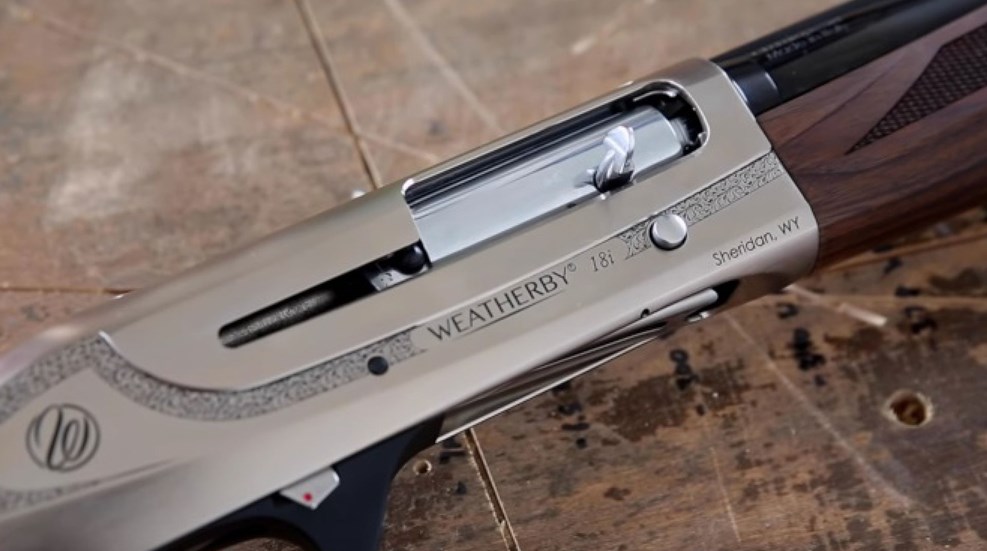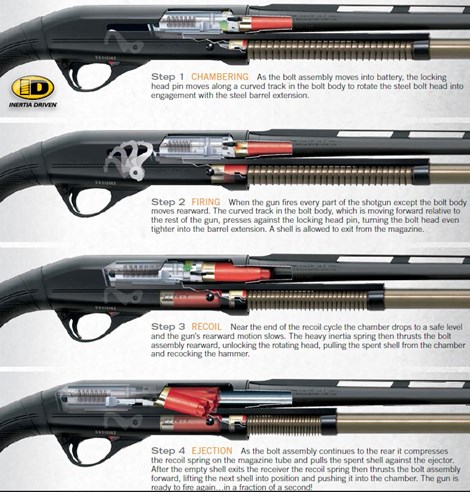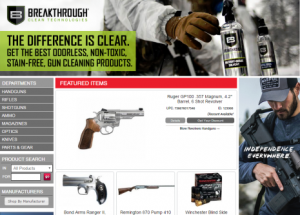The Semi-Automatic Shotgun Dilemma: Inertia vs. Gas
If you’re in the middle of an inertia vs. gas semi-auto shotgun debate, here are the facts.

It is not uncommon for my NRA Basic Shotgun course students to be brand new to the shotgun world. Without fail, once they start breaking clays, they are ready to invest in new shotguns, join a shotgun club and further their shotgun knowledge. Students always ask me, “What shotgun do you suggest I buy?” The answer is the same for any firearm purchase: Get the firearm that makes you happy and you will actually use! You will be happy with any firearm that fits you properly, feels good, and most importantly, enables you to succeed. That success could be in the form of broken clays or filling your game bag. Many times, my students express an interest in semi-automatic shotguns. I tell them to do their homework before they go to their local gun shop. When it comes to semi-automatic shotguns, consumers have a choice between inertia or gas operated guns. The debate over the best type of shotgun has been going on since the 1950s. Prior to World War II, inertia guns, also known as recoil-operated shotguns, were the only shotguns available to the average person. Word War II brought about gas-operated military rifles. This included the very popular M1 Garand. In the 1950s Browning, Remington and Winchester introduced their versions of gas-operated shotgun.
 Inertia (Recoil) Operated Shotguns
Inertia (Recoil) Operated Shotguns
Inertia-operated shotguns use the recoil from the previously fired shell to complete the cycling of the action. This type of semi-automatic shotgun uses a free-floating bolt carrier and inertia spring inside the receiver. During operation, the bolt carrier is thrown rearward, compressing the inertia spring while cocking the firing pin and ejecting the spent shell. The return spring compresses, sending the bolt forward to pick up a new shell and slamming shut. The shotgun is now ready to shoot again.
The biggest advantage of inertia shotguns is they tend to be very reliable. They are the preferred choice when in dirty, dusty or muddy conditions. Additionally, extreme temperatures do not adversely affect the operation of inertia-operated shotguns as with gas-operated shotguns. Cleaning an inertia-operated shotgun is also very simple and low maintenance.
Inertia-operated shotguns are usually lighter than their gas-operated counterparts. Since these shotguns are lighter, it is easier for the shooter to swing on target. They do not have a gas system under the fore-end, so they also tend to fit your hands more naturally.
The disadvantage of inertia-operated guns is that there is more felt recoil. This is because the shotgun does not utilize the expanding gasses to cycle the action. Inertia-operated shotguns are also more prone to fail to go into battery, especially if the charging handle is not allowed to slam shut. The bolt of these shotguns can also be taken out of battery more easily than gas-operated shotguns. It is a good idea when using an inertia-operated shotgun to keep the charging handle clear of any clothing or blind material when hunting to prevent the bolt from becoming disengaged after going in battery.
Gas-Operated Shotguns
Gas-operated shotguns use the expanding gasses from the previously shot shell to complete the cycling of the action. When the trigger is slapped the expanding gasses push the shot down the barrel. As the gasses travel down the barrel behind the shot, they pass over ports. These ports are drilled in the barrel and bleed some of the gasses off. The gasses that are bled off travel down a port tube until it contacts a piston. The piston is then pushed against a rod connected to the bolt. The bolt is then sent rearward. As the bolt travels rearward, the firing pin is cocked while ejecting the spent shell. The return spring is then compressed. The return spring then sends the bolt forward, picking up a new shell and slamming shut. The shotgun is now ready to shoot again.
The biggest benefit the gas-operated shotgun offers is the reduced felt recoil to the shooter. Since some of the expanding gasses are bled off to cycle the action, there are fewer expanding gasses exiting the muzzle. The gasses exiting the muzzle cause the felt recoil. In other words, some of the energy produced from the discharged shell is absorbed by the shotgun itself.
The disadvantage of a gas-operated shotgun is that it is more prone to malfunction the dirtier it gets. Debris and residue can clog ports and cause obstructions in the port tubes. Pistons can also accumulate debris, causing improper cycling. When the shotgun starts malfunctioning due to debris and residue, you need to completely clean the gas system and bolt. Because of the rings and pistons, this can be difficult when you are in the field during a hunt.
Extremely cold temperatures also negatively affect gas-operated shotguns. Any oil in the gas system and action can interfere with the cycling process. In extreme temperatures, all the oil should be removed, and a dry lube should be applied to the moving parts. Liquid lube can cause the shotgun to become sluggish and prone to stovepipes with the spent shells.
No matter which type of shotgun you choose to buy, take the time to do your homework and find the right one for you!

